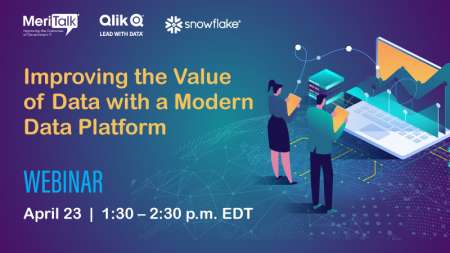When agencies began full-scale telework earlier this year, many were not anticipating it would evolve into a long-term workplace strategy. However, in the wake of COVID-19, recent calculations estimate $11 billion in Federal cost-savings per year due to telework, as well as a 15 percent increase in productivity. Agencies are determining how they can continue to modernize – and therefore optimize – to support greater efficiency into the future.
Though many agencies began implementing cloud and upgrading infrastructures well before the pandemic, legacy technology presents a unique challenge in the remote landscape. IT teams and employees who were directly connected to a data center now needed remote access to infrastructure, while keeping security a top priority.
How can agencies ensure they have secure and specific connections that serve their needs and also optimize performance? They must adapt, shifting access to where it is needed and augmenting existing technology with solutions that allow flexibility, agility, and the additional security needed within a distributed environment.
A New Approach for the New Normal
To address issues with remote access, many agencies have turned to software-defined networking in a wide area network (SD-WAN) as it provides secure connection between remote users and the data center or cloud. However, long-term success with telework will require more than access. It will require teams to change the way they use the technology they have.
Recently, I spoke on a MeriTalk tech briefing where I discussed how agencies can leverage cloud-ready infrastructures to accelerate modernization with operational cost-savings and increased efficiency. Dell Technologies VxRail with VMware Cloud Foundation is perfectly suited for the distributed workforce, allowing teams of any size, and in any stage of their modernization journey, to build what they need when they need it.
Remote employees don’t have the same access to the on-prem data center’s compute resources as they had when working on-site. VxRail acts as a modern data center, enabling virtual desktops, compute, and storage in one appliance while providing users with secure access and network flexibility.
Teams can design a VxRail component for as many users as needed and then scale by units. With this flexibility, agencies don’t require as much local infrastructure to function optimally and can scale their services faster and more affordably with one-click upgrades and maintenance.
Teams can also bring the local data center and cloud into one management portfolio – whether a multi-cloud or hybrid environment – integrating all of these capabilities into a single platform that is easy to consume.
These technologies offer cybersecurity advantages as well. The VMware Cloud Foundation can utilize VMware’s NSX, a virtualization and security platform. NSX enables teams to create granular micro-segmentation policies between applications, services, and workloads across multi-cloud environments. Agencies can control not only how many users are in their environment and what resources they are allowed to access, but also where and how users connect to those resources.
Create a Culture of Collaboration
The switch to Federal telework has caused agencies to take a closer look at how they can continue to modernize and optimize IT for mission success – no matter where their employees are located.
Beth Cappello, Deputy Chief Information Officer for the Department of Homeland Security, recently noted, “as we go forward … we’ll look back at the fundamentals: people, processes, technologies, and examine what our workforce needs to be successful in this posture.”
Whether using new technologies or augmenting existing technologies, success will come down to collaboration. Agencies should look to collaborate early and often, and bring in developers and key team members to leverage their knowledge and drive efficiency and agility from the start.
This cultural change will allow government to become more flexible and agile in their approach to modernization – exactly what they need to take Federal IT to the next level.
Learn more about how Awdata and Dell Technologies are helping improve Federal telework with cloud-ready solutions.


 Cloud adoption continues to play a critical role in this modernization effort for agencies, ranging from the U.S. Department of Homeland Security to U.S. Department of Defense. When looking to move their critical data, many agencies are turning to a hybrid multicloud environment, which enables data sets to live on-premise and in the cloud. Accomplishing a successful cloud adoption is no small feat – in fact, many agencies were tasked first with retrofitting the path in which this data moves from one environment to another – the network. There are many security benefits to modernizing federal networks and adopting a hybrid multicloud environment, but three key outcomes include:
Cloud adoption continues to play a critical role in this modernization effort for agencies, ranging from the U.S. Department of Homeland Security to U.S. Department of Defense. When looking to move their critical data, many agencies are turning to a hybrid multicloud environment, which enables data sets to live on-premise and in the cloud. Accomplishing a successful cloud adoption is no small feat – in fact, many agencies were tasked first with retrofitting the path in which this data moves from one environment to another – the network. There are many security benefits to modernizing federal networks and adopting a hybrid multicloud environment, but three key outcomes include: Scott Aukema is Director of Solutions Marketing at ViON Corporation with 15 years of experience supporting public sector commercial, and enterprise segments.
Scott Aukema is Director of Solutions Marketing at ViON Corporation with 15 years of experience supporting public sector commercial, and enterprise segments.